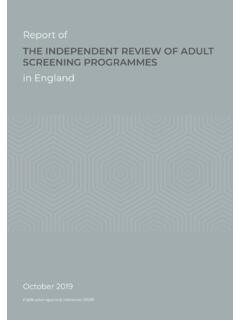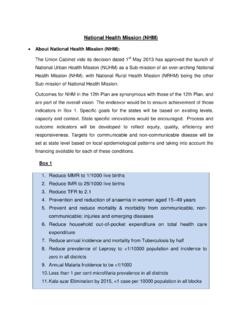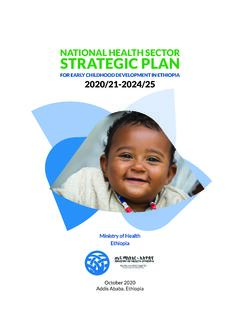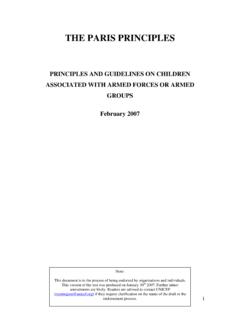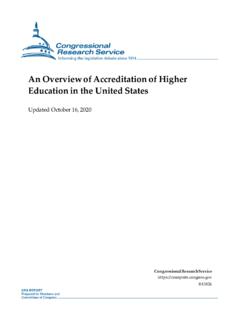Transcription of Guidelines on Budget Programmes - National Treasury
1 -+0 National Treasury Guidelines on Budget Programmes June 2010 update The document is available on the internet at: Contents 1. Introduction 1 Purpose of the Guidelines 1 Definitions 1 2. Concepts 1 Functionality and scope of budgetary Programmes 1 Three types of Budget Programmes 3 Budget programme Structures and Organisational Structures 3 Programmes , clusters and strategic priority areas 4 Provincial Budget programme Structures 5 Concepts of accountability 5 Roles of programme and subprogramme managers 6 3.
2 Detailed Guidelines and instructions 8 Design of Budget programme Structures 8 Definition of Programmes 8 Definition of Subprogrammes 9 Budgeting, Costing and Cost Attribution 11 Creating and amending Budget programme Structures 11 programme and subprogramme management 12 Guidelines on Budget Programmes 1. Introduction Purpose of the Guidelines The purpose of these Guidelines is to provide clarity to department managers on the design and use of Budget Programmes in departmental budgetary and management systems.
3 In line with the principles of the Public Finance Management Act (PFMA), the Guidelines aim to promote good financial management in order to maximise performance and service delivery through the efficient and effective use of limited resources. The Guidelines emerge within the context of section 216 of the Constitution; which mandates the National Treasury to prescribe measures to ensure both transparency and expenditure control in each sphere of government . Definitions A Budget programme is a main division within a department s Budget that funds a clearly defined set of objectives based on the services or functions within the department s legislative and other mandates. It also constitutes a management unit established within a department responsible for the delivery of that defined set of services and functions. While the term programme is often loosely used in many situations, in these Guidelines the use of programme is confined to the functional divisions created within the context of the Budget and designated as a programme in the Budget estimates, that is, main division in terms of Section 27(3)(b) of the PFMA.
4 A subprogramme is a constituent part of a programme , that defines the services or activities which contribute to the achievement of the objective(s) of the programme of which it forms a part. Some of the defined services or activities could include key projects identified by a department. A cluster is a group of departments which fall within a broadly defined sector of the economy as created under the system of cluster management established by the Presidency. A specific department may fall under more than one cluster. A priority area is a grouping of Programmes and/or subprogrammes across departments, which contribute towards a common high-level objective or goal of the government, for example, a key priority in the Medium Term Strategic Framework. A priority area may not be a unit for single department management purposes. 2. Concepts Functionality and scope of budgetary Programmes The overall purpose of Programmes within the budgetary system is to enable Parliament to link the allocation of funds to the performance of specific functions or the delivery of a particular category (or group) of services within the department s mandate.
5 The use of Programmes also 1provides appropriately scoped, sized and empowered units within departments to facilitate economical, efficient, effective and equitable performance and delivery of services. There are four main purposes for the Budget programme structure. These can be summarised as: (a) Planning and Budget allocation: to provide the linkage between the planned priorities and the allocation and appropriation of funds through the Budget ; (b) Costing: to provide an appropriate basis for the allocation of costs of the delivery of public services and performance and where appropriate, standardise the costing of specific items across different spending areas; (c) Management practice: to create a management unit within which managers in government departments can effectively manage financial and other resources to maximise the achievement of government objectives.
6 And (d) Autonomy and responsibility: to establish a framework within which managers are responsible for Budget execution and cost-effective achievement of results through greater transparency and accountability The Budget programme structure is comprised of a number of key elements including but not limited to the following: Budget elements Vote Name Vote Aim programme Name -Designated programme manager - programme purpose - programme objectives - programme performance indicators Subprogramme name -Designated subprogramme manager - Core activities and services - Subprogramme performance indicators Informational elements - Associated public entities - Associated conditional grants - Funded and unfunded posts An effectively designed Budget programme structure must be grounded in:The legislative or other mandates of the department and a logical breakdown of its funded functions and service delivery responsibilities, for services and functions funded to be clear to Parliament; The logic of intervention, underlying the activities of the department linking to the delivery of services (outputs), the achievement of desired results for the population (outcomes) and 2 attainment of impact and goals.
7 The logic of intervention should be articulated in each department s Strategic Plan; and The system of organisation of government, based on divisions established on a functional basis within each department to ensure the economical, efficient and effective delivery of public services and performance by the department as a whole. Three types of Budget Programmes (a) Support Service Programmes are groups of activities gathered into a single programme in each department which are not directly involved in the delivery of services to the public, but rather provide support services to all Programmes within the department. Typical support services programme activities are Human Resource, department-wide Information Technology services and other common services that are usually classified under corporate services.
8 The technical content of the work of a support service programme is not specifically related to the specialised mandate of the department. The Support Services programme is named Administration . The Administration programme must always be indicated as the first main division, programme 1, in budgetary documentation. It comprises of a set of functions which deliver support services to the institution and towards performance and the delivery of services by other Programmes . Only support services should be allocated to the Administration programme , unless there is an agreement with the National Treasury to include any of the specific functions of a department or entity in programme 1. (b) Enabling Programmes perform functions which, while not delivering public services directly, facilitate or enable other Programmes to provide services.
9 Enabling Programmes may also facilitate services rendered or performed by non-government organisations. Examples of enabling Programmes include Programmes providing sector-wide strategy and policy guidance, performing regulatory functions, and providing sector-specific resources, such as trained staff, as well as Programmes responsible for managing financial transfers to other bodies operating within the sector. In some cases for example, concurrent functions enabling Programmes are primarily facilitating service delivery by departments and Programmes at the provincial or local government level. (c) Service Delivery Programmes are Programmes which are involved in the direct delivery of services to the public. In some cases a single programme may combine features of an Enabling and a Service Delivery programme . Budget programme Structures and Organisational Structures The Budget programme structure defines a Budget structure centred on results and outcomes and the organisational structure defines how a department is organised into an efficient and effective functioning system to achieve those same results and outcomes.
10 Budget programme structures and organisational structures should as far as possible be aligned, at least at the higher levels at which Programmes and subprogrammes are defined, nonetheless, the two need not be identical but should be very closely related and should 3 converge overtime. Alignment of the Budget programme structure and the organisational structure would ensure a single channel for reporting where appropriate and for defining accountability for funds and for the attainment of results (see below). Attainment of this alignment would be promoted if all activities and functions carried out by a department fall under one of the Programmes within that department and if the senior management of a department occupy the role of either programme or subprogramme manager, where possible. In addition, departments may need to have an internal management Budget that maps the relationship between the Budget programme structure and the organisational structure and clearly shows the lines of responsibilities for different outputs and outcomes.










